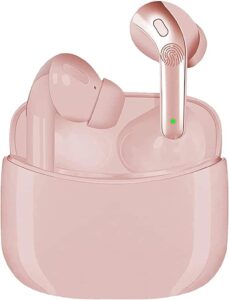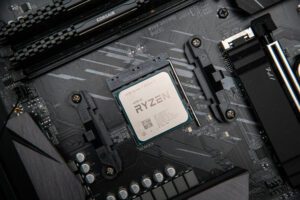To remove ram from a laptop, turn off the laptop, disconnect the power cord, open the memory compartment, remove the battery (if necessary), and then gently remove the ram module. Upgrading or replacing ram is a common maintenance task for laptop owners and can improve the overall performance of the computer.
Proper handling and careful installation of ram is important to prevent damage to the memory module or the laptop itself. In this article, we will provide step-by-step instructions on how to remove ram from a laptop, as well as tips on how to handle ram safely and troubleshoot any issues that may arise.


Credit: westcountycomputers.com
Step-By-Step Guide For Removing Ram From A Laptop
Removing ram from a laptop can feel intimidating, but it’s a straightforward process if you follow the right steps. With this step-by-step guide, you’ll have no trouble removing and replacing ram in your laptop. Each of the following headings takes you through the process, from identifying the type and location of ram to checking if the new module works.
Identify The Type And Location Of Ram In Your Laptop
Different laptops can have different ram formats, so it’s critical to identify the type before removing it. In most cases, you can find this information in the laptop’s user manual, or on the manufacturer’s website. These are the primary ram formats you might encounter:
- Sdram: Older type of ram often used in computers up until the early 2000s.
- Ddr: Essentially an upgraded version of sdram, with data speeds of up to twice as fast.
- Ddr2: Another upgrade over ddr, with faster data transfer rates and support for multi-core processors.
- Ddr3: The most common type of ram used in laptops, but this is changing with the rise of ddr4.
- Ddr4: Found in newer laptops, with faster speeds and energy efficiency than ddr3.
Once you’ve identified the correct type of ram, you need to locate where it is in your laptop. In most cases, you’ll find a small compartment on the bottom or side of your laptop, which holds the ram module.
Gather The Necessary Tools And Equipment For Opening The Laptop
Before removing the ram module, you must gather the right tools. You’ll need a screwdriver (usually phillips-head), and an anti-static wristband to ground yourself. It’s also essential to have a clean workspace, and a soft cloth for cleaning the contacts on the ram module.
Once you have everything you need, it’s time to turn off your laptop.
Shut Down The Laptop, Remove The Battery, And Unplug The Adapter To Prevent Electrical Damage
It’s crucial to remove all power sources from your laptop before working on the ram module. This includes unplugging the ac adapter and removing the battery. Failure to do this can cause electrical damage to you or your laptop.
Locate The Ram Compartment Or Cover And Remove Any Screws Or Clips Holding It In Place
Once you’ve removed the power sources, locate the ram compartment or cover. Depending on your laptop, you may need to remove screws or clips to access the ram module. Always take care when removing screws to avoid damaging the laptop or the screw heads.
Carefully Remove The Ram Module By Pressing Down On The Clips Or Removing The Screws
Next, gently press down on the clips holding the ram module in place. If there are screws holding it in place, unscrew them, and then remove the module. Be sure not to drop the ram module or touch the gold contacts on the bottom.
Clean The Ram Module Contacts With A Soft Cloth
Before installing the new ram module or re-inserting the old one, it’s essential to clean the contacts. Use a soft cloth and gently wipe the contacts clean. This will remove any dust or debris that might interfere with the connection.
Insert The New Ram Module Or Re-Insert The Old Ram Module If It Was Removed For Cleaning
Now you can install the new ram module or re-insert the old one, making sure it clicks into place. Make sure that the notches on the ram module line up with the notches in the slot. If you are installing a new module, make sure that it is the correct type and capacity.
Replace The Ram Compartment Cover Or Screws And Re-Attach The Battery And Adapter
Once the ram module is securely installed in your laptop, replace the compartment cover or screw it back in place. Then, reattach the battery and plug in the ac adapter.
Power On The Laptop And Check If The New Or Old Ram Module Is Properly Recognized
Finally, turn on your laptop and check if the ram module is working correctly. To do this, go to the system information settings and check the amount and type of ram installed. If the module is not working correctly, you may need to repeat the above steps or seek professional help.
Removing and replacing ram from a laptop can seem daunting, but following these steps will result in a successful upgrade or repair. Always refer to the laptop’s user manual or manufacturer’s website if you have any questions or concerns.
Tips For A Successful Ram Removal Process
When it comes to removing ram from a laptop, there are some essential tips that you need to keep in mind to ensure a smooth and successful process. In this section, we will outline some crucial tips that can be helpful regardless of the laptop’s model or brand.
Use Anti-Static Protection And Work In A Clean And Well-Lit Area
Before you begin the ram removal process, it is crucial to ensure that you are working in a clean and well-lit area. It helps you to see the small components that you will be dealing with. Also, you need to use an anti-static wrist strap or mat and eliminate all static electricity from your body and the workspace.
This step is essential because it can prevent accidental damage to your laptop components caused by electrostatic discharge (esd).
Do Not Use Excessive Force Or Pressure When Removing Or Inserting Ram
While removing or inserting ram to your laptop, never use excessive force or pressure as it could result in permanent damage to the components. You need to handle the ram module gently and remove it carefully using a slow and steady force.
It is vital to be gentle when handling the ram module as it is a fragile component that can be easily damaged if not handled correctly.
Ensure That The Ram Is Compatible With Your Laptop’S Specifications Before Purchasing Or Installing It
Before you purchase or install a ram module, it is essential to ensure that the ram is compatible with your laptop’s specifications. Ensure you check your laptop’s manual or visit your laptop’s manufacturer’s website to confirm which type of ram is compatible with your device.
Installing incompatible ram can lead to laptop damage or system instability.
By following these tips, you can successfully remove ram from your laptop without incurring any damages to the delicate components. Always ensure to practice safety measures and handle the components with utmost care during the removal process.
Common Issues And Troubleshooting
If you’ve recently installed new ram on your laptop and are experiencing issues, don’t panic. This guide will walk you through some common problems that users experience after installing ram on their laptops, and how to troubleshoot them.
Ram Not Recognized By The Laptop After Installation
If your laptop doesn’t recognize the newly installed ram, there are a few things you can try:
- Check if the ram is properly seated in the slot. Turn off your laptop and remove the battery, then remove and reinsert the ram module. Check to make sure it’s properly seated, then place the battery back in and turn on your laptop to see if the issue has been resolved.
- Check if the ram is compatible with your laptop. Different laptops use different types of ram, and not all ram is compatible with all laptops. Check the specifications of your laptop to see what type of ram it supports before purchasing a new module.
- Test the ram with a diagnostic tool. There are a variety of diagnostic tools you can use to test your ram, such as memtest86+. Download and run the tool to determine if the ram is faulty.
Laptop Not Booting Or Crashing After Ram Installation
If you’re experiencing booting or crashing issues after installing new ram, try the following:
- Remove the new ram module and see if the issue is resolved. If so, the ram may be incompatible or faulty.
- Update your bios. Your laptop’s bios may not be compatible with the new ram module. Check your laptop manufacturer’s website for the latest bios update and follow their instructions to update it.
- Check for driver conflicts. If the laptop is not booting, you may have a driver conflict. Boot in safe mode and check for any driver conflicts. You can also try uninstalling any recently installed software or updates.
Solutions To These Common Issues
If you are still experiencing issues after troubleshooting, consider the following:
- Contact the manufacturer or a professional for additional assistance.
- If the ram is faulty, replace it.
- If the issue persists, it may not be related to the new ram installation and you may need to seek further technical support.
Frequently Asked Questions For How To Remove Ram From Laptop
Can I Remove Ram From A Laptop?
Yes, you can remove and replace the ram module on most laptops.
How Do I Know What Ram My Laptop Has?
You can check the ram capacity and type in the laptop’s settings or use a system information tool.
What Tools Do I Need To Remove Ram From My Laptop?
You’ll need a screwdriver, an antistatic wrist strap, and a flat surface to work on.
Conclusion
Removing ram from your laptop is no longer a daunting task that requires professional help. With this guide, we have equipped you with all the necessary knowledge and steps you need to remove ram from your laptop. Always be gentle, cautious and do not rush the process.
Remember to disconnect your laptop from power sources and take antistatic measures to avoid electrostatic discharge. This guide is not limited to removing ram from laptops alone, it can also serve as a guide for upgrading or replacing your laptop ram.
By following the steps outlined in this guide, you can improve your laptop’s performance, increase its storage capacity and enhance its functionality. We hope you find this guide helpful, and we encourage you to share with others who might need it.
Now you can add removing ram to your list of diy computer skills.



